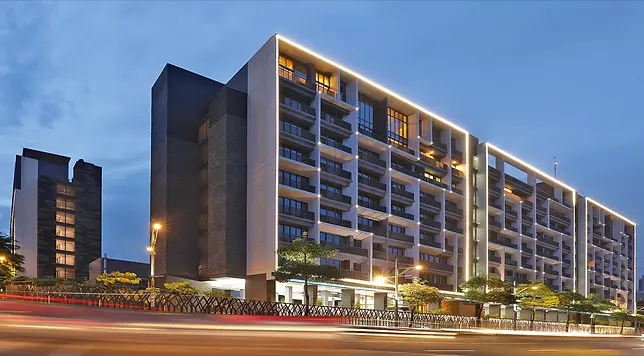Unlocking Property Value: A Comparative Guide between the Netherlands and the Philippines
- bedandgoinc
- 2024年1月10日
- 読了時間: 3分
Investing in real estate is a strategic move that often involves increasing the value of a property over time. Whether you're in the Netherlands or the Philippines, there are unique approaches to enhancing property value. In this comprehensive guide, we'll explore the key factors that contribute to property appreciation in these two diverse locations and provide insights into the contrasting strategies employed.
Section 1: Understanding the Real Estate Markets

1.1 The Dutch Market:
The Netherlands boasts a stable and well-regulated real estate market. With a growing economy, high living standards, and a strong demand for housing, property values in the Netherlands have been on a consistent upward trajectory. The strict urban planning regulations and limited space in cities like Amsterdam and Utrecht contribute to the scarcity of housing, driving property values higher.
1.2 The Philippine Market:
Contrastingly, the Philippines experiences a dynamic and evolving real estate landscape. Rapid urbanization, a burgeoning middle class, and government initiatives to improve infrastructure have played a pivotal role in the growth of the property sector. The archipelagic nature of the Philippines presents a wide range of opportunities and challenges, with varying property values across different regions.
Section 2: Location, Location, Location
2.1 Dutch Urban Planning:
In the Netherlands, the concept of location is paramount. Proximity to amenities, public transport, and cultural attractions significantly influences property values. Urban planning plays a crucial role, with strict zoning laws ensuring a balance between residential, commercial, and recreational spaces. Investing in areas with planned developments or proximity to major cities is a common strategy.
2.2 Philippine Regional Dynamics:
In the Philippines, location dynamics vary across islands and regions. Metropolitan areas like Metro Manila and Cebu City command higher property values due to increased economic activity. However, the appeal of resort destinations like Boracay or Palawan also attracts investors. Understanding the regional dynamics is essential for maximizing property value in the Philippines.
Section 3: Cultural Considerations

3.1 Dutch Design and Sustainability:
In the Netherlands, property value is often linked to design and sustainability. Modern, energy-efficient homes with eco-friendly features are highly sought after. Integrating sustainable technologies like solar panels and smart home systems not only increases property values but also aligns with the Dutch emphasis on environmental consciousness.
3.2 Philippine Architectural Diversity:
In the Philippines, the cultural and architectural diversity across regions is a key factor. While modern designs are popular in urban areas, traditional and vernacular architecture may hold appeal in more rural or heritage-rich locations. Balancing cultural sensitivity and contemporary amenities can significantly enhance property values.
Section 4: Infrastructure and Connectivity
4.1 Dutch Transport Networks:
The Netherlands boasts a well-developed and efficient public transportation system. Properties located near major transportation hubs, such as train stations and airports, tend to have higher values. Investing in areas with upcoming infrastructure projects can be a lucrative strategy for increasing property value.
4.2 Philippine Infrastructure Challenges:
In the Philippines, challenges in infrastructure development persist, particularly in rural areas. However, ongoing government initiatives, such as "Build, Build, Build," aim to address these issues. Property investors should keep a keen eye on upcoming infrastructure projects that may impact connectivity and, consequently, property values.
Section 5: Legal and Regulatory Landscape
5.1 Dutch Property Regulations:
The Netherlands has a well-established legal framework governing real estate transactions. Clear property rights, transparent legal processes, and strict building codes contribute to a secure investment environment. Staying informed about zoning regulations and potential changes in legislation is crucial for property owners.
5.2 Philippine Legal Considerations:
Navigating the legal landscape in the Philippines requires a nuanced understanding of property laws and regulations. Foreign ownership restrictions, titling processes, and potential changes in policies can impact property values. Engaging legal professionals familiar with local laws is essential for successful property investment.
Section 6: Economic Factors

6.1 Dutch Economic Stability:
The Netherlands' robust economy and stable job market contribute to a strong demand for housing. Economic stability is a key driver of property value growth, making it imperative for investors to monitor economic indicators and trends.
6.2 Philippine Economic Growth:
In the Philippines, rapid economic growth has led to an expanding middle class with increasing purchasing power. This demographic shift has driven demand for housing, influencing property values. Understanding economic trends and demographic shifts is crucial for property investors seeking to capitalize on growth opportunities.
Conclusion:
In conclusion, while increasing the value of a property shares common principles globally, the unique characteristics of the Netherlands and the Philippines demand tailored strategies. Whether it's leveraging sustainable design in Amsterdam or understanding regional dynamics in the Philippines, property investors must adapt their approaches to the specific nuances of each market. By combining cultural sensitivity, legal acumen, and a keen awareness of economic and infrastructural trends, investors can unlock the full potential of their real estate investments in these diverse landscapes.

Comments